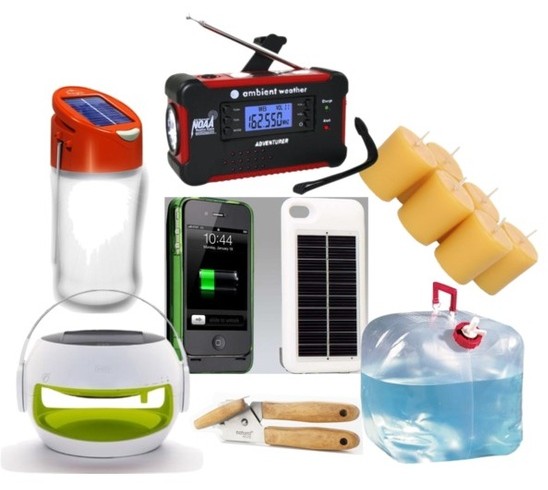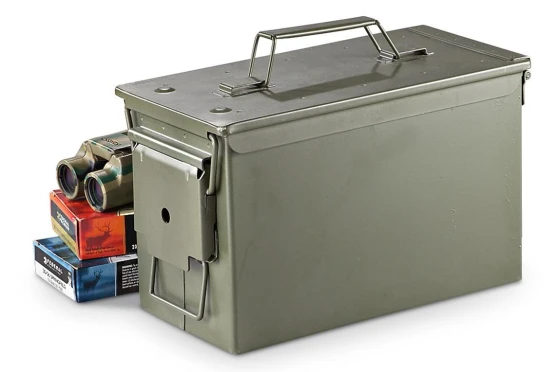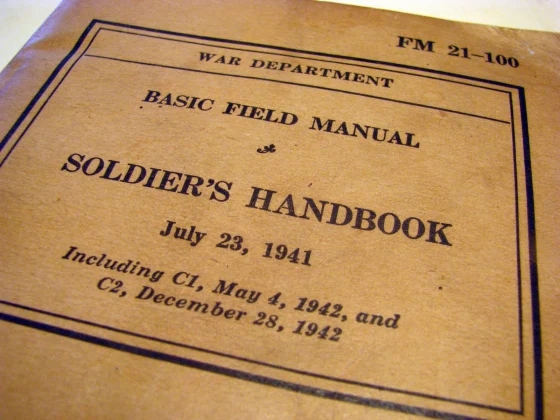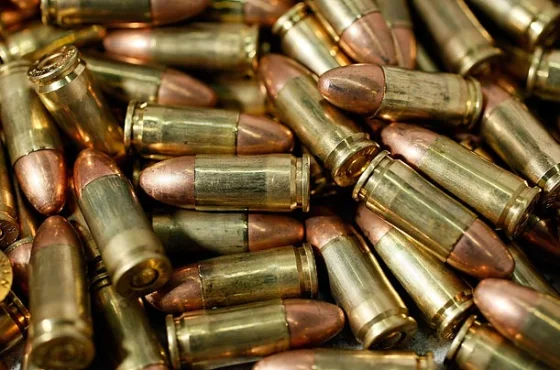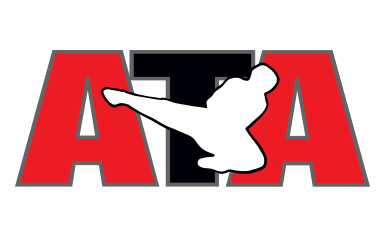“Water, water, everywhere, Nor any drop to drink.”
– Coleridge’s Rime of the Ancient Mariner –
Contents:
Water Philosophies:
Water Purification:
- Water Purification Essentials
- How To Filter Water In Your Home
- Boiling
- Distillation
- Portable Water Purification
Water Storage:
- Water Storage Essentials
- Bottled Water
- Milk-Style Water Jugs
- 55-Gallon Drums
- Water Bricks
- Bulk Water Storage Tanks
- Bathtub
- Food Grade Hose
- Water Heater
- Hidden Sources of Water In Your Home
- How To Drain A Water Heater
- How To Treat Drinking Water For Long-Term Storage
- How To Prep Water For Long Term Storage
- Water Storage Recommendations
- Water Storage
- Sources of Water Outside Your Home
- How To Keep Contaminated Water Out Of Your Home
Water Purification Philosophies:
Coming soon.
back to top
How To Filter Water In Your Home:
back to top
Boiling:
back to top
Distillation:
Survival Still:
Homemade Distillation:
Solar Distillation:
back to top
Water Storage Essentials:

“If you run out of water then nothing else in the website will matter.
In three days you will be dead.”
– Savannah Arsenal –
At a bare minimum you should plan on each person in your household consuming one gallon of water per day. This is taking into account only water that is going to be ingested into the body through drinking or cooking. It does not take into account all of the water that will be necessary for cleaning (dishes, clothes, etc.). You will need clean, purified water for human consumption, but keep in mind that untreated rain water, swimming pool water, and water from clean, running streams and rivers can be used for non-consumption uses such as flushing toilets, washing clothing, and even bathing if it isn’t too dirty (and you are desperate enough).
All of your water storage must be able to keep your water clean and safe for consumption.
When deciding on what containers to use for portable water storage, remember that water weighs 8.3 pounds per gallon.
Immediate / Personal Water Storage:
Your immediate / personal water supply should be easily portable, both in size and weight, as well as method of carry. Examples include Camelbak style bladder carriers, canteens, bottled water, etc.
Short Term Water Storage:
Intended to supply you and your family enough water for a 72 hour emergency. Your short-term water storage containers should be small and light enough to be easily be moved around by one person and transported in vehicles should you need to bug-out. Examples include cases of bottled water (easy to move, and easy to barter and trade), 5-gallon water cooler style water jugs, Water Bricks, etc. When planning your short-term water supply keep in mind that five gallons of water weighs over 40 pounds.
Intermediate Term Water Storage:
Intended to supply you and your family enough clean, drinking water for up to three months. Depending on your storage capacity, you will probably have to plan on ways to replenish and purify your stored water as it is depleted. Examples include 55-gallon drum or similar bulk storage, bathtub bladders, water heater (provided that the incoming water wasn’t contaminated when it filled the water heater, and that you have the proper hoses and tools to drain it).
Indefinite Term Water Storage:
You can’t store an indefinite supply of clean, drinking water, but depending on your location you may have a large or infinite supply of water that can be made potable. A “large” supply might be a swimming pool. Examples of an indefinite supply include spring, well, stream, river, lake, rain collection, etc. As with intermediate term water storage, you will have to have a way to collect and purify water to replenish your water storage. Examples include large storage tanks and 55-gallon drums. As the water is consumed during an extended catastrophe, it will be replenished and purified. You will be limited by the rain producing weather, methods of storage, and methods and supplies to purify your collected water.
back to top
Bottled Water:
Some of the pros of bottled water are that it is easy to transport, it is easy to trade and barter, bottles are refillable. This makes bottled water perfect for your 72 hour kit and bugout bag.
There are several cons to storing bottled water. Bottled water is expensive, relative to price per gallon. Also, because the bottles are clear and allow light in, they will eventually begin to grow bacteria.
When planning for your bottled water needs, keep in mind that 24 16-ounce bottles = 3 gallons.
back to top
Milk-Style Water Jugs (spoiler: don’t do it):
Some of the pros of milk-style water jugs are that they are easy to transport in a vehicle, and their size makes them easy to trade and barter. The jugs are refillable, although depending on the style of top, they may accidentally open too easy in certain circumstances. They are perfect for your home’s 72 hour kit, but plan on replacing after six months of storage.
There are several cons to using milk-style water jugs for water storage. They are not as easily carried as bottled water. Over an extended period of time the jugs may develop leaks. You will lose your water, and it may damage your shelving or storage area. The jugs are not light-proof, so when small leaks form, bacteria may easily start to grow inside. Jugs are not very sturdy and may easily rupture if dropped or mishandled.
Your best bet it to avoid using milk-style water jugs for long-term bulk water storage. However, if you still insist, after six months of storage you will want to consume the water, recycle the plastic, and replace them with new and unopened water jugs. Be sure not to store them on or above anything that you can’t risk getting wet or growing mold on.
back to top
55 Gallon Drums:
 55 gallon food grade drums are an awesome way to store large volumes of potable water for long periods of time.
55 gallon food grade drums are an awesome way to store large volumes of potable water for long periods of time.
While drums are a good way to store bulk water, there are still a few cons to using this storage method. Unless someone has small bottles to transfer water into, you won’t be able to barter water. You water won’t be portable at all as a full drum of water will weigh in excess of 400 pounds. The drums will require a floor that can support the weight of the full barrel(s).
Drum and hand-pump sets can be ordered online from both Sam’s Club and Costco.
55 Gallon Drum Water Storage Recommendations:
- Be sure to only use new, plastic, food grade drums.
- Dark colored drums are better than opaque as they will block out light which may help bacteria to grow in the water.
- Do not store on bare, concrete floors, such as in garages. The chemical makeup of the concrete will degrade the plastic over time. Place wood or some type of sturdy stand under the barrels.
 Purchase a new, food grade hand pump for your barrels. Allow your pump to thoroughly dry before putting away so that it doesn’t grow mold and bacteria, and store it in a plastic bag to keep it clean.
Purchase a new, food grade hand pump for your barrels. Allow your pump to thoroughly dry before putting away so that it doesn’t grow mold and bacteria, and store it in a plastic bag to keep it clean.- When storing water (for less than 6 months), add eight drops of unscented chlorine bleach (5% solution) per gallon.
- If you choose to store your barrels vertical, then you can move them around your storage area with ease using the Water Barrel Dolly, pictured right.
back to top
Water Bricks:
Waterbricks are an incredible way to store water in tighter, confined spaces such as apartments, small houses, cabins, etc.
Costco sells 30-packs of 3.5 gallon bricks with two spigots for $469 (including shipping). This will allow you to store 105 gallons of water. The price of the Water Bricks is about twice what it costs for two new 55-gallon drums that will store practically the same amount of water, however you will benefit with the bricks because they are easy to store and carry, and unless you stack all of them in one area of your house, they shouldn’t create a weight issue.
The only downsides to the bricks is that may be more time consuming when you periodically drain and refill each individual brick during the good times, and more problematic to filter clean water back into during bad times.
back to top
Bulk Water Storage Tanks:
There are a number of companies that make large, bulk water containers. Basically these are giant versions of the 55-gallon water barrels discussed above. With these systems you will be able to store a lot of water, however you will need a garage or basement these systems are extremely heavy. These systems are easy to fill with a drinking-water safe garden hose. They do, however suffer from the cost-per-gallon of storage price when compared to the Water Bricks.
Costco sell these type of systems online.
back to top
Bathtub:
Your bathtub can hold a lot of “utility water” that can be used for washing clothes, flushing toilets, etc. You will have to know that a disaster is pending so that you can fill the bathtub in advance of loosing water pressure, or the incoming water getting contaminated. Bathtub water is perfect for non-potable water uses such as flushing toilets, washing clothes, etc. Remember that bathtub water isn’t going to be potable, at least not without serious purification efforts.
There are a couple of companies that make bladders that can placed in the tub and then filled via the tub’s faucet. The bladders will give you an entire bathtub full of drinking water. The major downside of these bladders is that you will have to know in advance that a disaster is going to happen, such as a hurricane, and fill it up before the incoming water is contaminated or the pressure is lost. Also, the bladders are intended for single use and then thrown away.
Aquapod Bathtub Bladder:
WaterBOB Bathtub Bladder:
Recommendations:
If you are expecting a disaster, such as a hurricane, use a WaterBob to store up to 100 gallons of drinking water in your bathtub.
If you don’t have some type of bathtub bladder, you can still fill your bathtub(s) and use the water for washing clothes and, and flushing toilets.
back to top
Food Grade Hose:
 Don’t use garden hose for filling your storage barrels or draining a hot water heater. Garden hoses a not food grade and are not safe for potable water. They may contain lead, may leech harmful chemicals, and may harbor harmful bacteria inside. Instead use a hose that is intended for potable water, such as those used to service boats and recreational vehicles. They look similar, but are food grade. You can purchase them at recreational vehicle dealerships, and in the garden section of WalMart.
Don’t use garden hose for filling your storage barrels or draining a hot water heater. Garden hoses a not food grade and are not safe for potable water. They may contain lead, may leech harmful chemicals, and may harbor harmful bacteria inside. Instead use a hose that is intended for potable water, such as those used to service boats and recreational vehicles. They look similar, but are food grade. You can purchase them at recreational vehicle dealerships, and in the garden section of WalMart.
back to top
Water Heater:
There is a very large, hidden source of clean water inside your home. Depending on its size, your water heater can provide you with 30-50 gallons of clean drinking water (unless the incoming water supply has been contaminated). You can shut off the water heater and drain it of its water for drinking and cooking. Requires a few tool, food grade hose, and food grade storage containers to download the water into.
How To Drain A Water Heater:
- Close the feed valve so that contaminated tap water won’t feed into the tank.
- Turn off heating element (electric heaters) or natural gas (gas heaters) to prevent overheating and pressure from building in tank. If you turn off your gas supply, you MUST have your gas company turn the gas back on. You can easily blow yourself up if you don’t know what you are doing.
- Connect drain hose to drain spigot at bottom of tank. In your disaster preparations you may want to build a hose system with a valve on the end so that you won’t have to continuously turn on and off the water at the water heater connection. If you have to you can use a garden hose with a nozzle on the end.
- You may have to open the overflow valve on the side of the tank to break the suction so the water flows freely.
back to top
Other Large Sources Of Water:
There are many sources of large volumes of water, but all but a few wells will require purification. A spring or well may already be a source of water for your home. If so, you will want to consider how to keep the water flowing even after the public power grid has gone down and your pump quits.
Any of the other sources are going to require considerable effort and resources to transport and purify should you choose to use them during a long-term or indefinite emergency. Plan now and get the supplies, training, and practice that you need now before the SHTF.
Examples of large volume or renewable water sources include:
- Swimming pool.
- Spring.
- Well.
- Stream or River.
- Pond or Lake
back to top
How To Treat Drinking Water For Long-Term Storage:
For treating water that has not been treated with either 5-6% or 8.25% (sodium hypochlorite) bleach:
- 5 gallons water: 40 drops or ‘5’ one-eighth teaspoons of 5-6% bleach.
- 5 gallons water: 27 drops or ‘3’ one-eighth teaspoons of 8.25% bleach.
- 55 gallon water barrel: 7 teaspoons of 5-6% bleach.
- 55 gallon water barrel: 4.5 teaspoons of 8.25% bleach.
Note that during storage household liquid bleach will break down into oxygen and table salt, losing potency over time, up to 50% in just 6 months to a year.
back to top
How To Store Water For Long Term:
- After treatment, be sure that your water barrel is sealed (lid on securely).
- Label container as “drinking water” and include storage date.
- Keep stored water in a place with a fairly constant cool temperature.
- Do not store water containers in direct sunlight.
- Do not store plastic water containers on concrete surfaces.
- Do not store water containers in areas where toxic substances such as gasoline or pesticides are present.
- Drain and refill (and re-treat) your water containers every 6 months if you can. It’s generally not necessary (if treated, sealed, and stored properly), however it is easy to do and will ensure quality water should you ever need it.
back to top
Recommendations:
- Store enough bottled water to last each person in your household / group from three to seven days.
- Use Water Bricks, barrels, or large storage tanks to store enough drinking water to last each person in your household / group for at least one month.
- You may choose to increase you water storage capability over time to meet your perceived needs.
- Purchase the necessary equipment and supplies to purify water from local bulk and renewable sources for an extended time period.

































